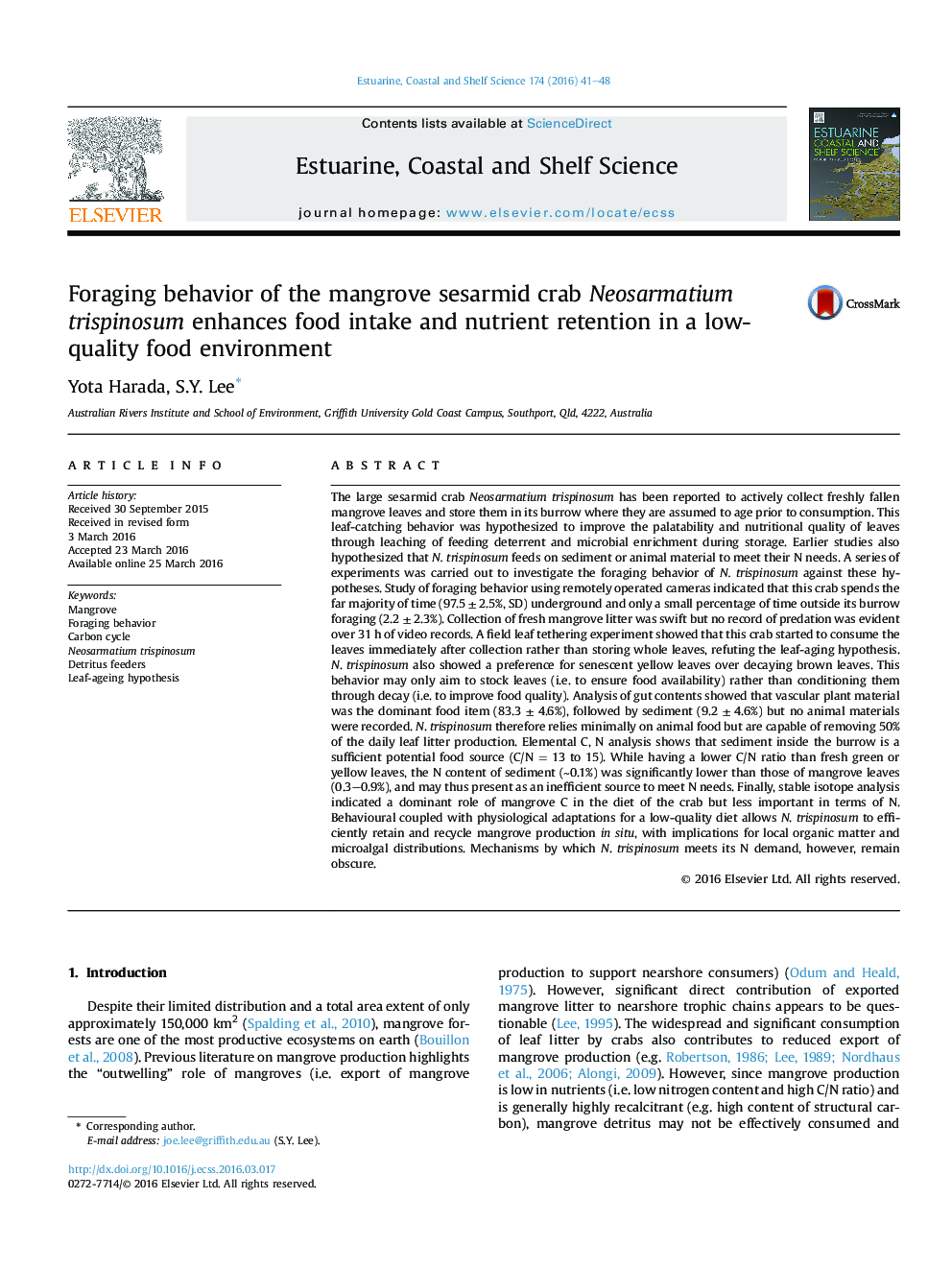| کد مقاله | کد نشریه | سال انتشار | مقاله انگلیسی | نسخه تمام متن |
|---|---|---|---|---|
| 4539298 | 1626625 | 2016 | 8 صفحه PDF | دانلود رایگان |

• Neosarmatium trispinosum swiftly collects and consumes 50% of fresh mangrove leaf litter.
• No evidence for the leaf-ageing hypothesis or consumption of animal material.
• Foraging behavior is likely driven by limited food availability and predation risk.
• This behavior drives rapid in situ mineralization of mangrove production.
The large sesarmid crab Neosarmatium trispinosum has been reported to actively collect freshly fallen mangrove leaves and store them in its burrow where they are assumed to age prior to consumption. This leaf-catching behavior was hypothesized to improve the palatability and nutritional quality of leaves through leaching of feeding deterrent and microbial enrichment during storage. Earlier studies also hypothesized that N. trispinosum feeds on sediment or animal material to meet their N needs. A series of experiments was carried out to investigate the foraging behavior of N. trispinosum against these hypotheses. Study of foraging behavior using remotely operated cameras indicated that this crab spends the far majority of time (97.5 ± 2.5%, SD) underground and only a small percentage of time outside its burrow foraging (2.2 ± 2.3%). Collection of fresh mangrove litter was swift but no record of predation was evident over 31 h of video records. A field leaf tethering experiment showed that this crab started to consume the leaves immediately after collection rather than storing whole leaves, refuting the leaf-aging hypothesis. N. trispinosum also showed a preference for senescent yellow leaves over decaying brown leaves. This behavior may only aim to stock leaves (i.e. to ensure food availability) rather than conditioning them through decay (i.e. to improve food quality). Analysis of gut contents showed that vascular plant material was the dominant food item (83.3 ± 4.6%), followed by sediment (9.2 ± 4.6%) but no animal materials were recorded. N. trispinosum therefore relies minimally on animal food but are capable of removing 50% of the daily leaf litter production. Elemental C, N analysis shows that sediment inside the burrow is a sufficient potential food source (C/N = 13 to 15). While having a lower C/N ratio than fresh green or yellow leaves, the N content of sediment (∼0.1%) was significantly lower than those of mangrove leaves (0.3–0.9%), and may thus present as an inefficient source to meet N needs. Finally, stable isotope analysis indicated a dominant role of mangrove C in the diet of the crab but less important in terms of N. Behavioural coupled with physiological adaptations for a low-quality diet allows N. trispinosum to efficiently retain and recycle mangrove production in situ, with implications for local organic matter and microalgal distributions. Mechanisms by which N. trispinosum meets its N demand, however, remain obscure.
Journal: Estuarine, Coastal and Shelf Science - Volume 174, 5 June 2016, Pages 41–48